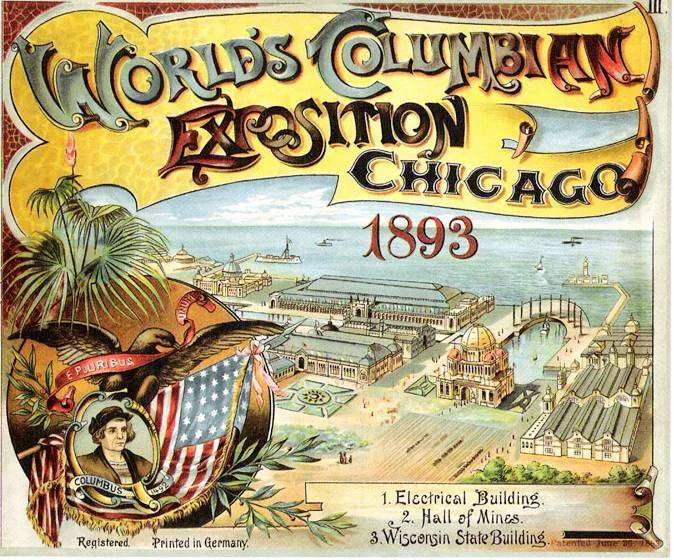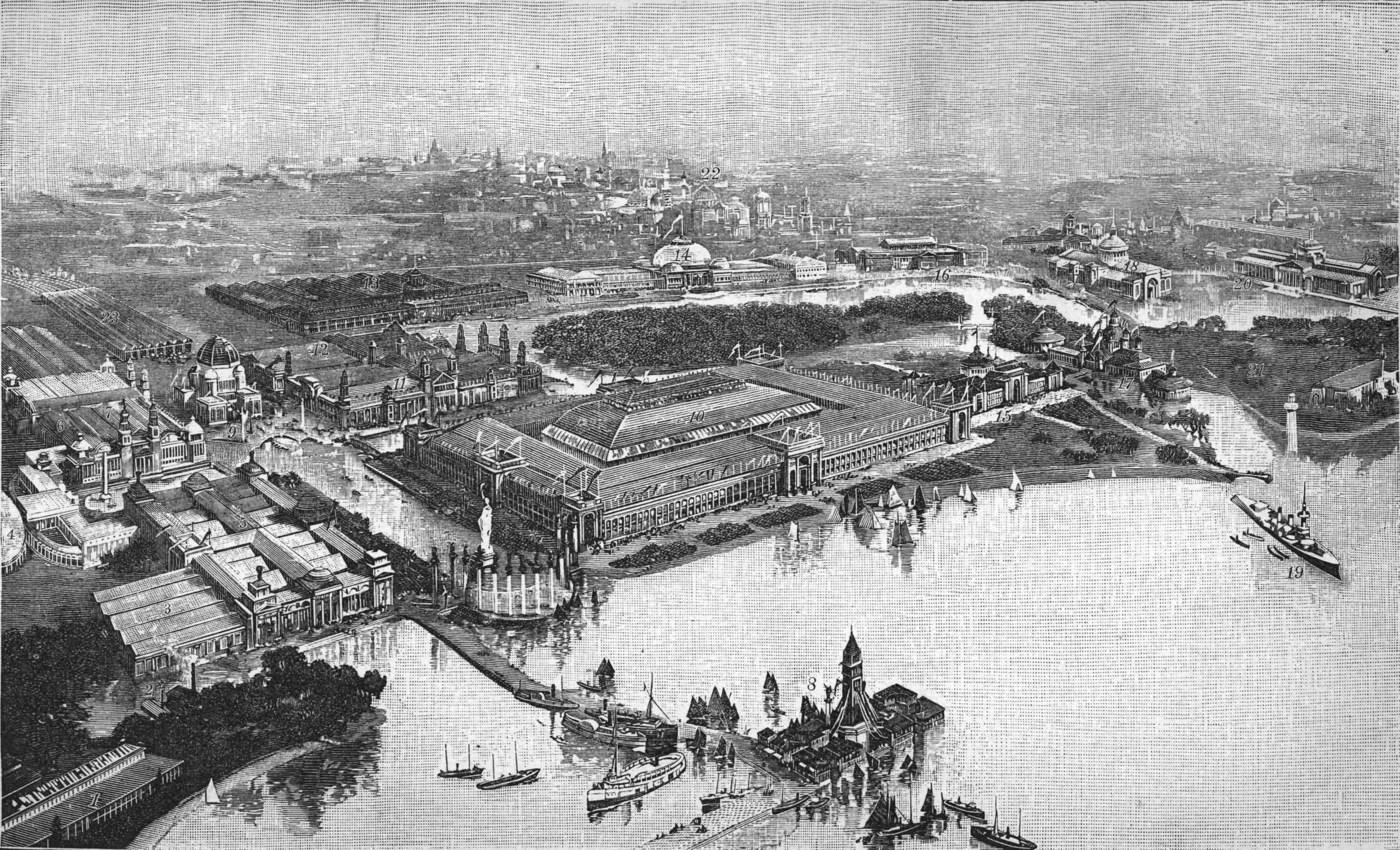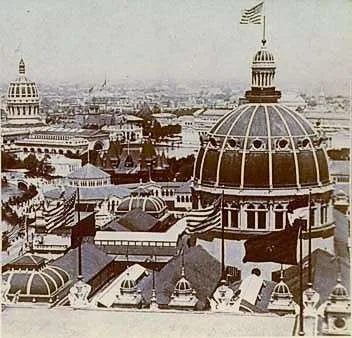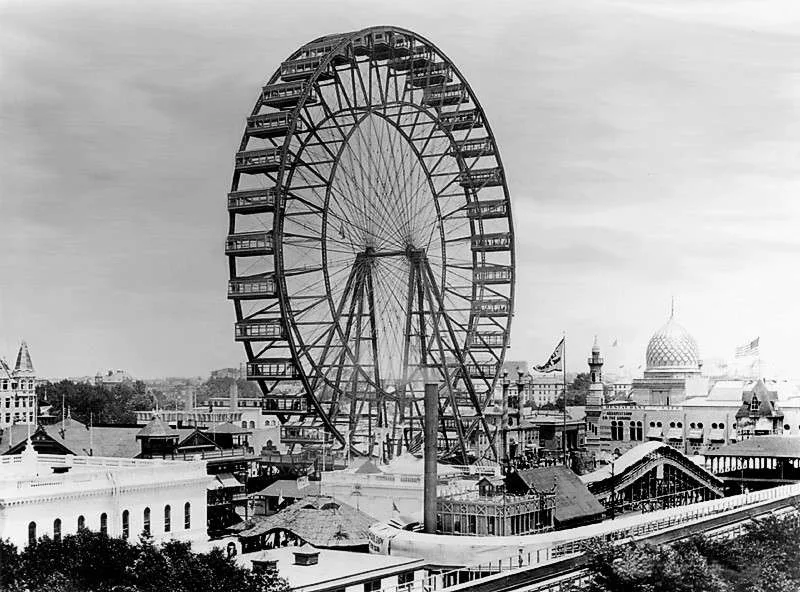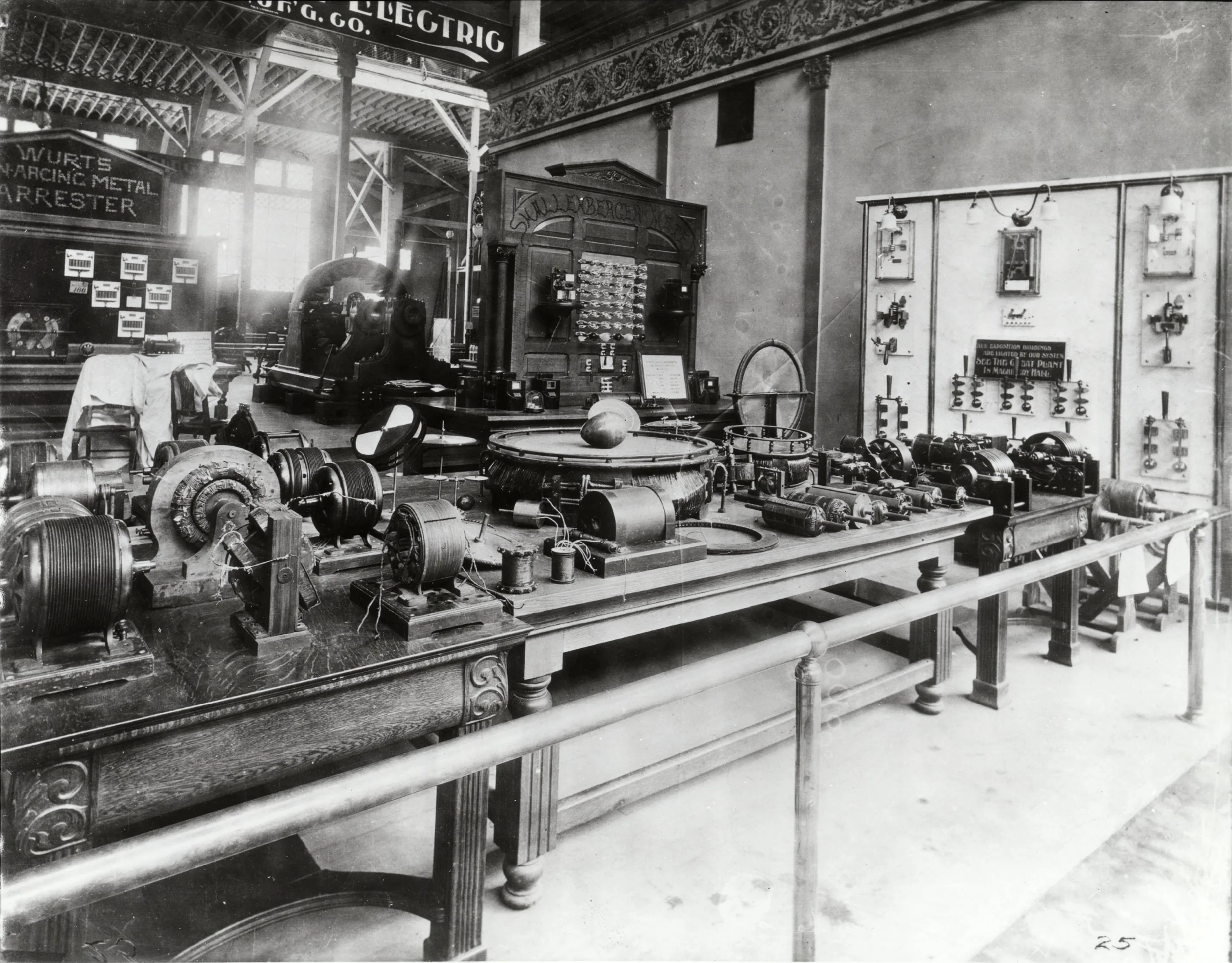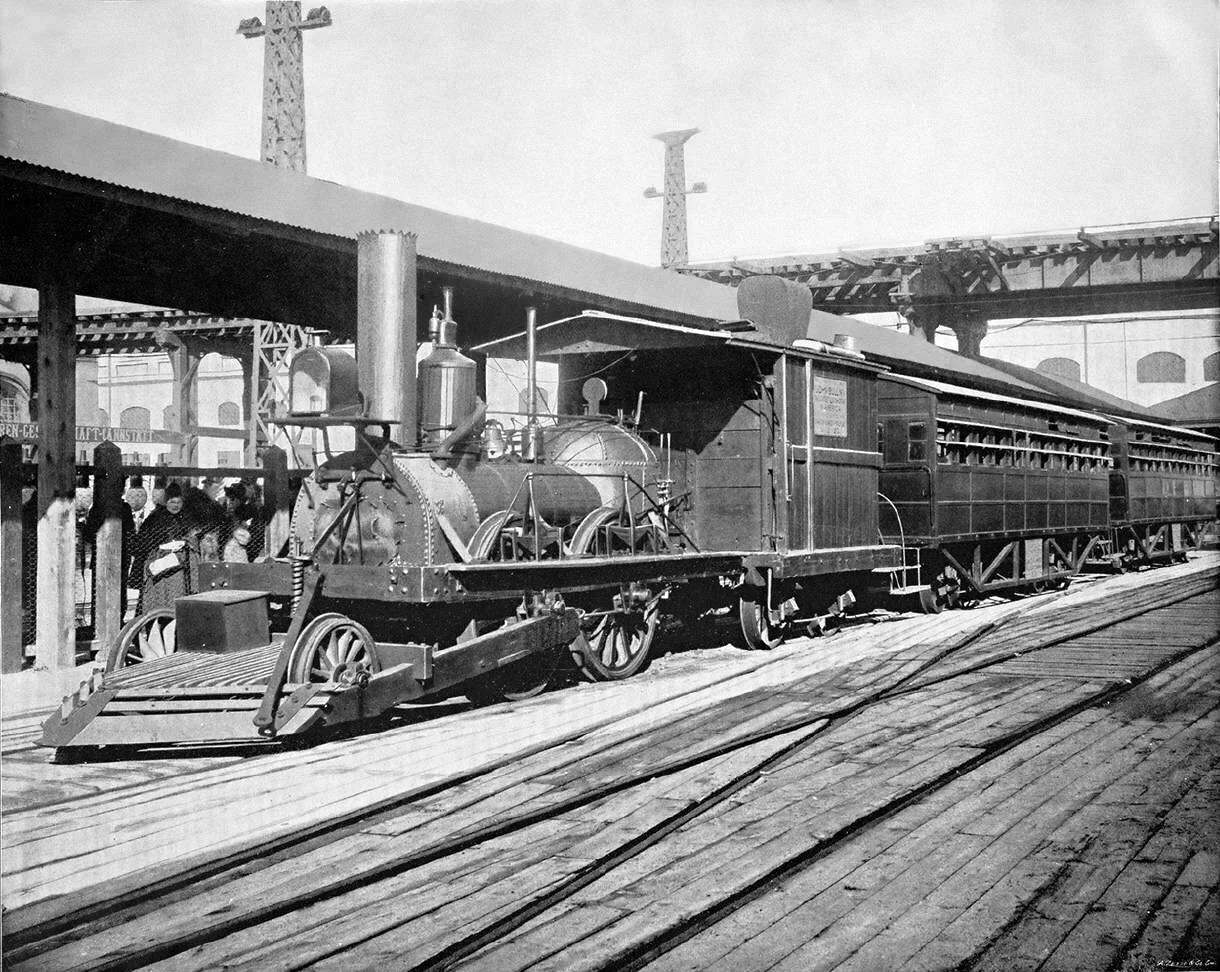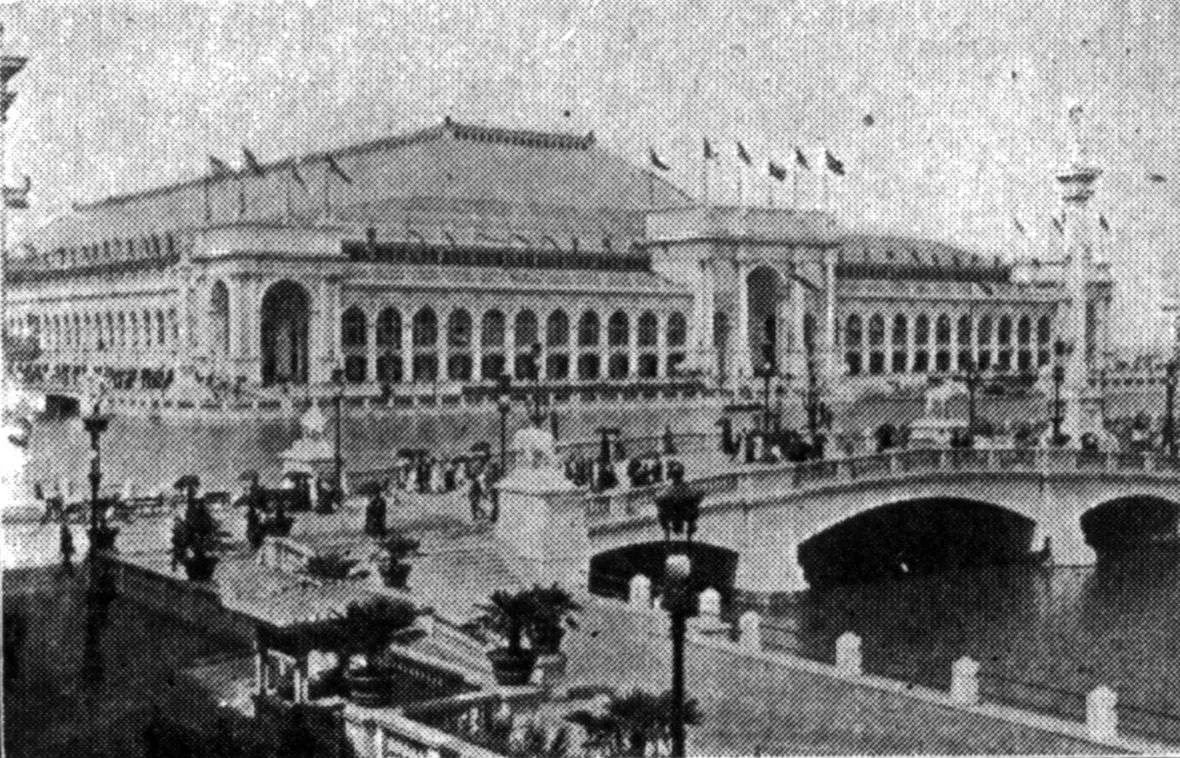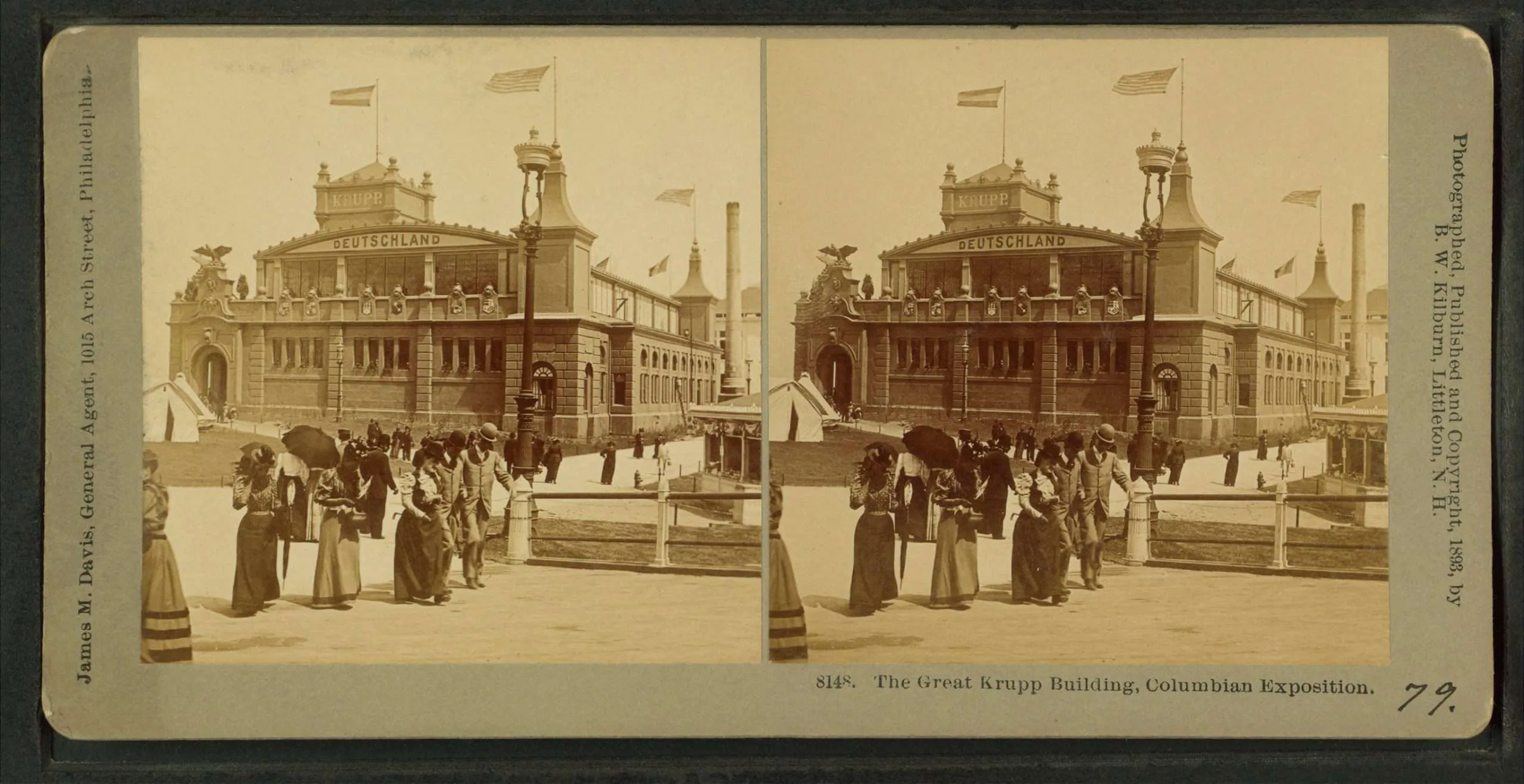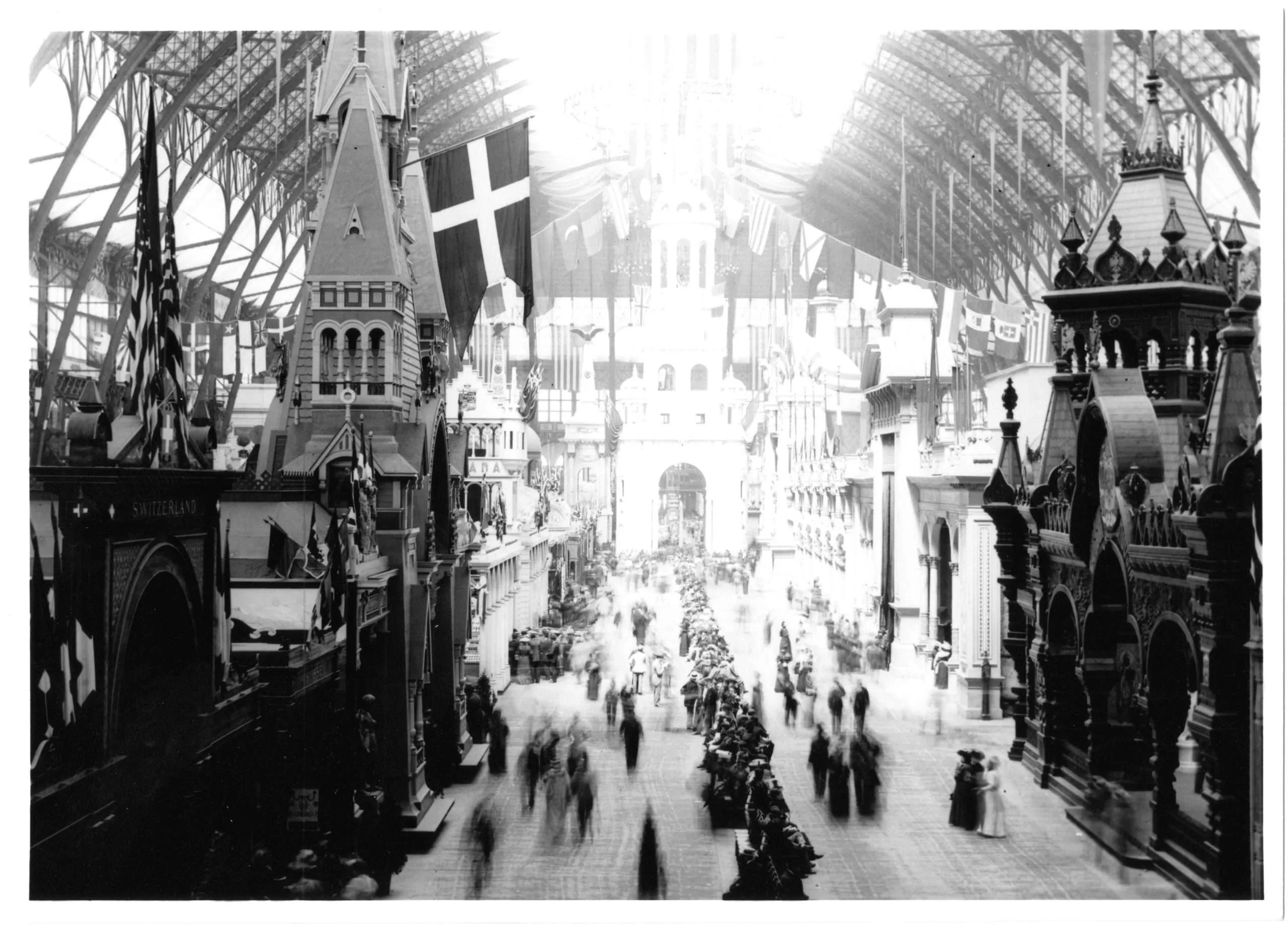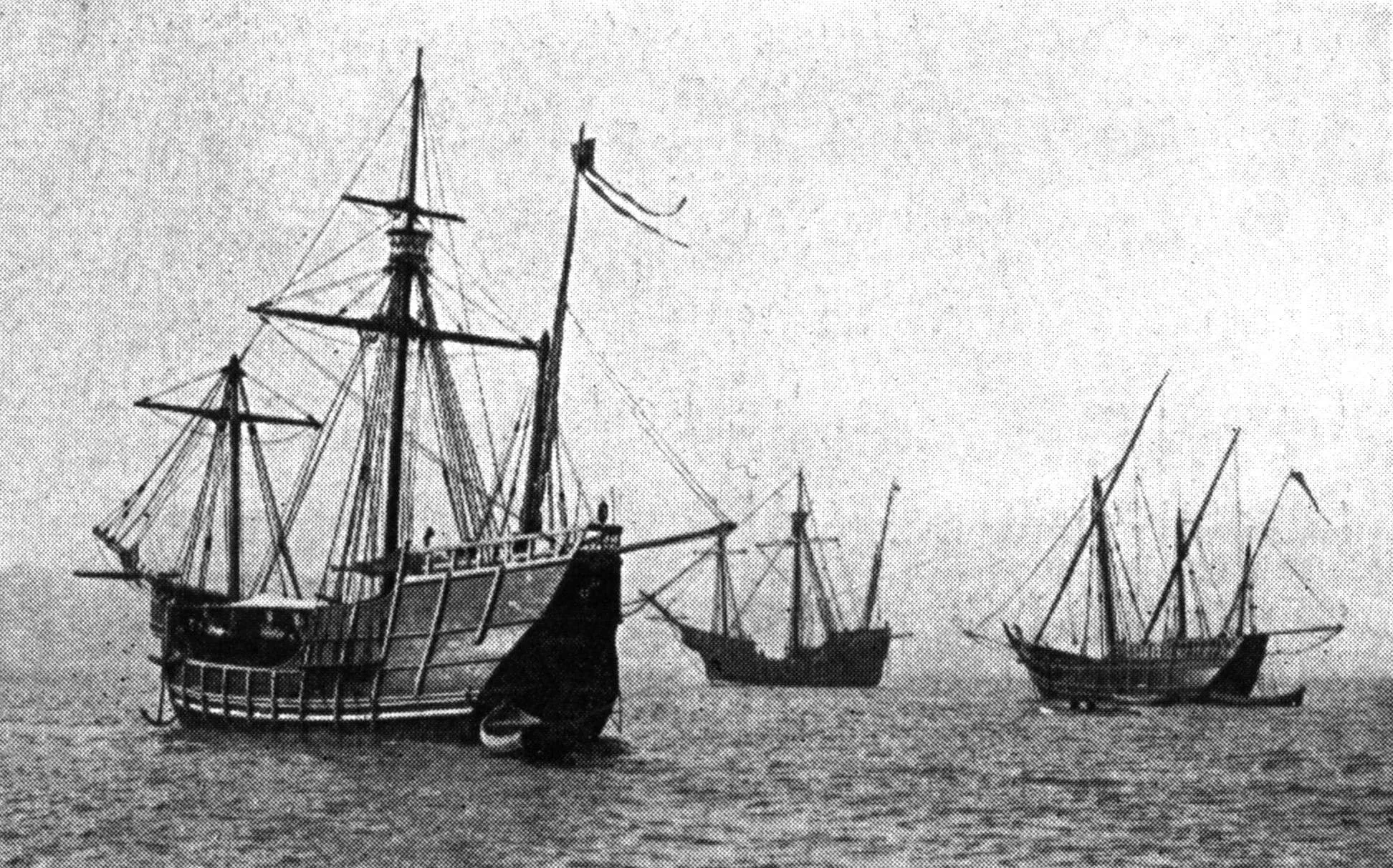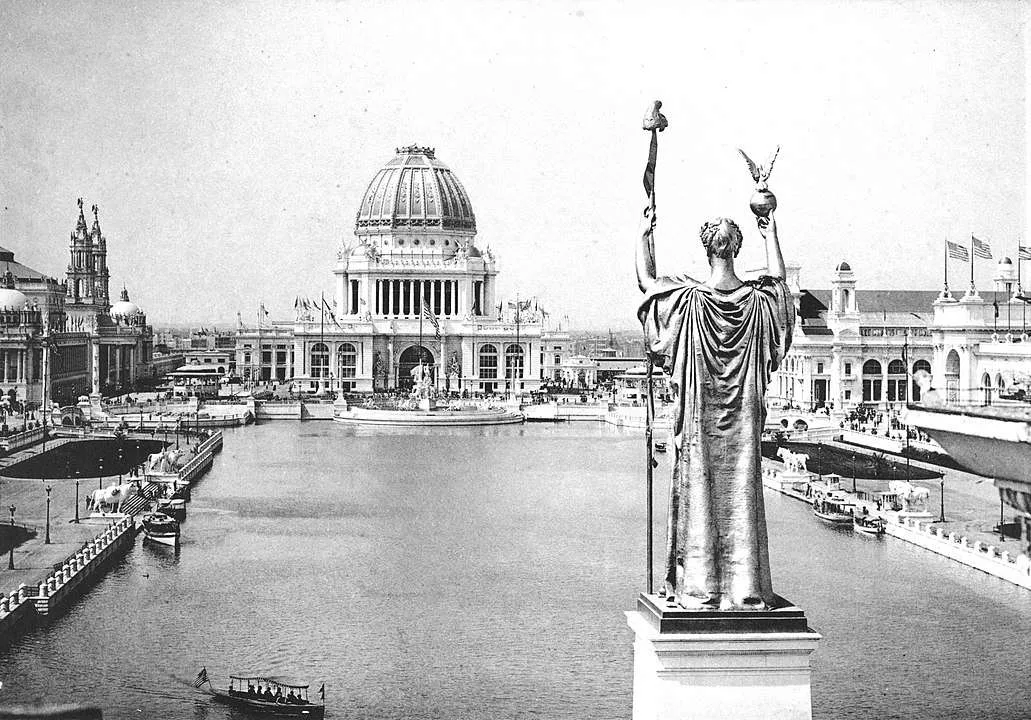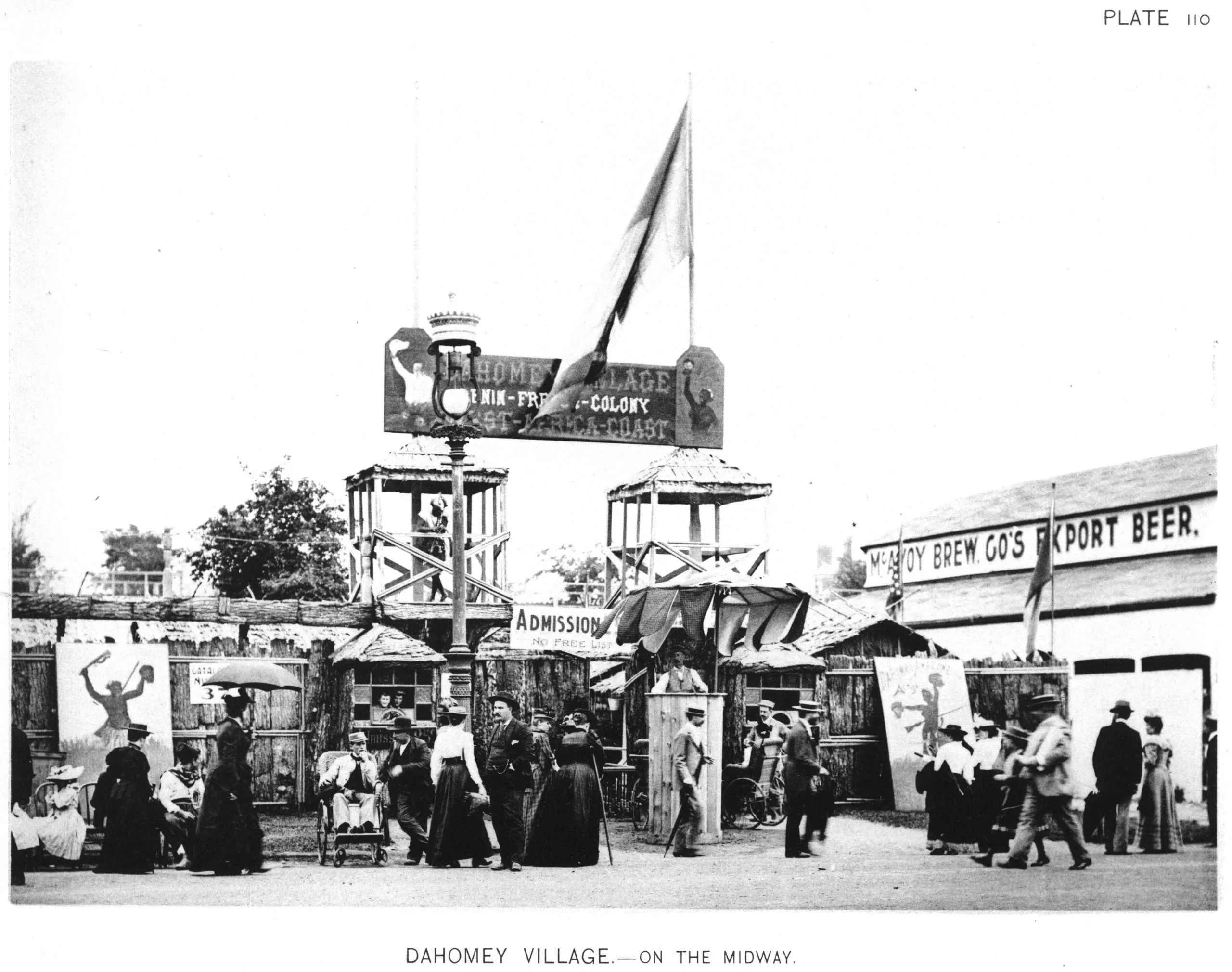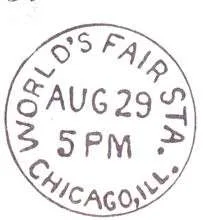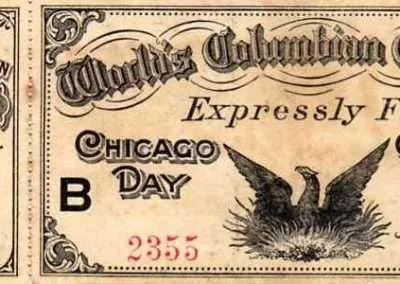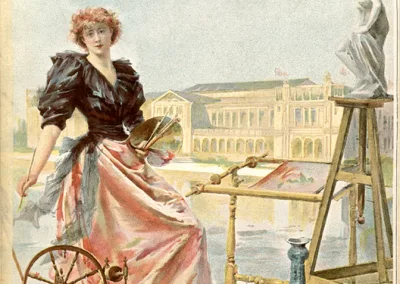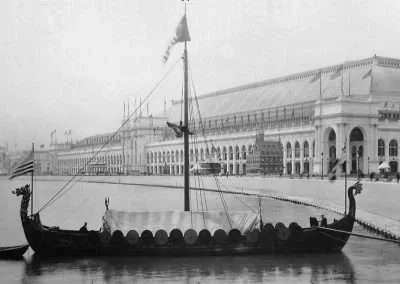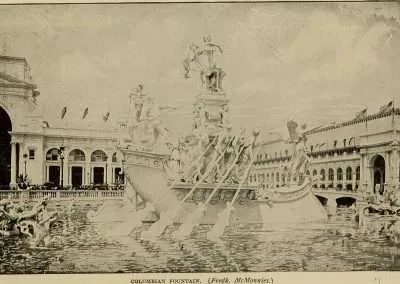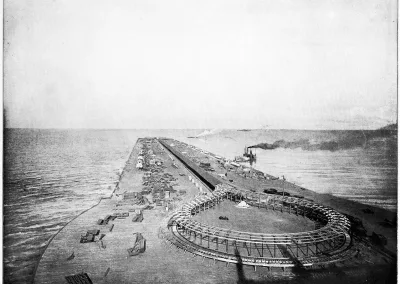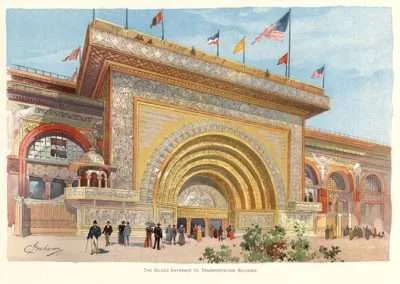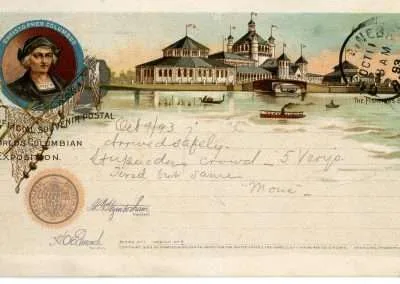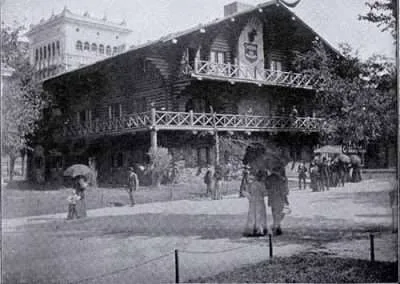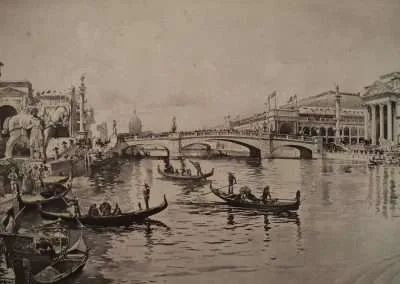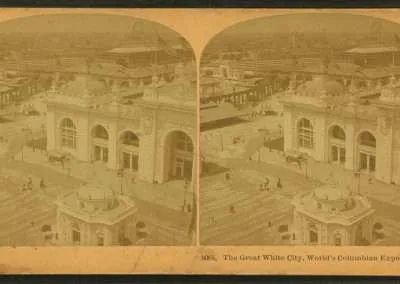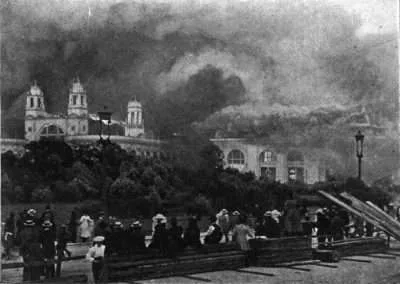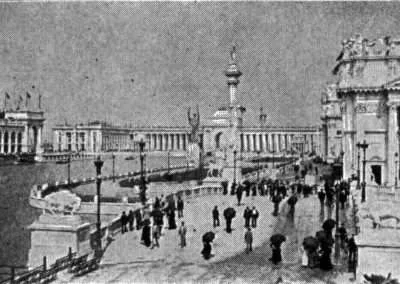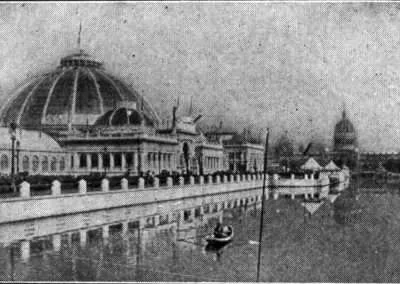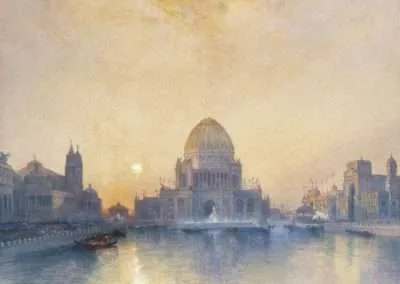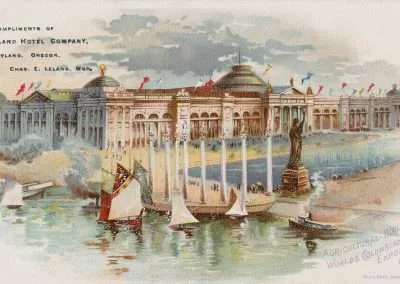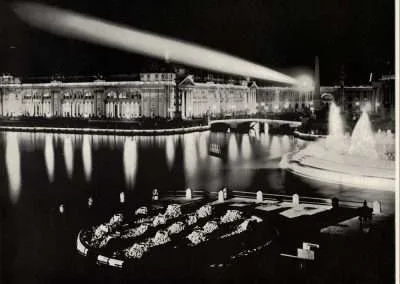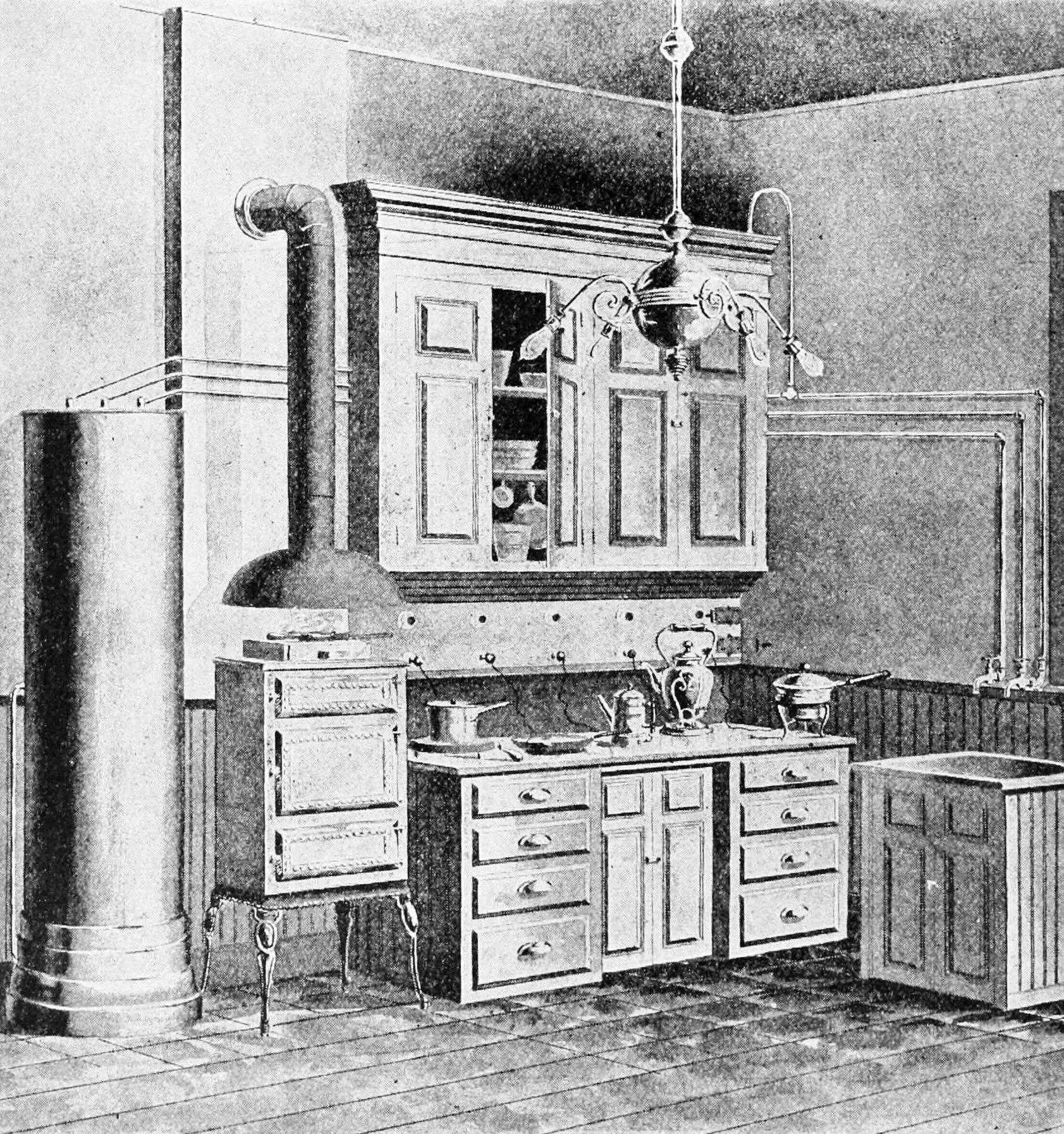Introduction
The World’s Columbian Exposition was a grand fair held in 1893 in Chicago, Illinois, to commemorate the 400th anniversary of Christopher Columbus’s voyage to America. This remarkable event was a culmination of a spirited competition among leading cities in the United States, with Chicago ultimately being chosen due to its strategic location as a railroad center and its guarantee of $10 million. The exposition covered a vast area of 686 acres (278 hectares) along Chicago’s south lakefront, known today as Jackson Park. Led by visionary architects and planners such as Daniel H. Burnham, Charles B. Atwood, and Frederick Law Olmsted, the fair’s design incorporated a stunning display of Classical architecture, giving rise to the awe-inspiring “White City.” Beyond its grand facades, the exposition introduced groundbreaking innovations, including the iconic Ferris wheel and the mesmerizing power of electricity, leaving a lasting impact on American technological advancement and architectural aesthetics. The World’s Columbian Exposition attracted millions of visitors, making it a historic event that showcased the progress, achievements, and aspirations of the Gilded Age America.
The construction of the World’s Columbian Exposition was a massive endeavor, with significant investments made in grounds and buildings. The total expenditure amounted to $28,340,700 ($861.7 million in today’s value), with approximately $18,678,000 dedicated to creating the fair’s infrastructure. The sheer scale of the event attracted a staggering number of visitors, with over 21.5 million paid admissions and a total attendance exceeding 25.8 million. Despite some counting discrepancies, the fair concluded with a cash balance of $446,832, making it the first American international exposition to turn a profit.
Planning and Construction
The World’s Columbian Exposition was the result of a spirited competition among leading cities in the United States, with Chicago emerging as the victorious host. Led by architect Daniel H. Burnham and designer Charles B. Atwood, the fair’s buildings were meticulously planned and constructed to create a unified and awe-inspiring aesthetic. The expansive grounds, encompassing 686 acres of land, underwent a remarkable transformation under the guidance of renowned landscape architect Frederick Law Olmsted.
To finance the fair, a combination of funding sources was utilized. The city of Chicago played a significant role by offering a guarantee of $10 million, while the federal government provided financial assistance through $5 million in appropriations. Private contributions also played a crucial part, with numerous individuals, corporations, and even foreign countries contributing financially to the exposition.
The construction of the fair required extensive coordination and collaboration among architects, engineers, craftsmen, and laborers. The planning and construction phase spanned a period of four years, from the announcement of Chicago as the host city in 1890 to the grand opening in 1893. This relatively short timeframe demonstrated the remarkable efficiency and dedication of those involved in bringing the fair to life.
The fairgrounds were located on land that comprised various parcels of public and private ownership, including parts of Jackson Park, an existing public park designed by Frederick Law Olmsted and Calvert Vaux. The transformation of the park and adjacent properties into magnificent fairgrounds showcased the ingenuity and vision of the planners and architects involved.
The World’s Columbian Exposition stands as a testament to the ambitious spirit of the time and the remarkable achievements of those who contributed to its planning and construction. From the financial support provided by the city, federal government, and private donors to the efforts of the skilled workforce, the fair emerged as a grand celebration of human ingenuity and progress.
The White City and Innovations
The exposition’s buildings, collectively known as the “White City,” stood as magnificent structures adorned with Classical elements. Illuminated by electric lights, the fairgrounds transformed into a radiant spectacle at night. Here is a list of some of the key buildings:
- Administration Building: Designed by Richard Morris Hunt, it served as the central administrative hub of the fair.
- Agricultural Building: Designed by Charles McKim of McKim, Mead & White, it showcased exhibits related to agriculture and farming.
- Manufactures and Liberal Arts Building: Designed by George B. Post, it was one of the largest buildings in the fair and displayed works related to literature, science, art, and music.
- Mines and Mining Building: Designed by Solon Spencer Beman, it showcased exhibits related to mining and mineral resources.
- Electricity Building: Designed by Henry Van Brunt and Frank Maynard Howe, it highlighted the advances in electric power and technology.
- Machinery Hall: Designed by Robert Swain Peabody of Peabody and Stearns, it displayed the latest machinery and industrial innovations.
- Woman’s Building: Designed by Sophia Hayden, it celebrated the achievements of women in various fields.
- Transportation Building: Designed by Adler & Sullivan, it showcased different modes of transportation, including trains and automobiles.
- Fisheries Building: Designed by Henry Ives Cobb, it featured exhibits related to fishing and aquatic life.
- Forestry Building: Designed by Charles B. Atwood, it highlighted the importance of forests and showcased wood-related industries.
- Horticultural Building: Designed by Jenney and Mundie, it displayed a wide variety of plants and horticultural exhibits.
- Anthropology Building: Designed by Charles B. Atwood, it housed exhibits related to anthropology and indigenous cultures.
Amidst the serene facades, visitors encountered groundbreaking innovations that forever changed the world. One such marvel was the iconic Ferris wheel, invented by G.W.G. Ferris, which towered above the fairgrounds and provided breathtaking panoramic views. Electricity, a relatively new technology at the time, took center stage, with U.S. President Grover Cleveland inaugurating the fair by activating the electric power supply, demonstrating its potential to shape the future.
Here are many of the time-changing innovations
- The Ferris wheel, an iconic invention by G.W.G. Ferris that offered visitors breathtaking panoramic views of the fairgrounds.
- Electric lighting, which illuminated the fairgrounds at night and showcased the transformative power of electricity.
- Advances in transportation, including the John Bull locomotive and a Baldwin 2-4-2 locomotive.
- Architectural achievements, such as the neoclassical design of the fair’s buildings, including the Administration Building, the Agricultural Building, and the Manufactures and Liberal Arts Building.
- The use of the electrotachyscope by Ottomar Anschütz, which projected moving images using a Geissler tube.
- Louis Comfort Tiffany’s stunning chapel, which showcased his artistic talent and craftsmanship.
- The introduction of various well-known products, including Juicy Fruit gum, Cream of Wheat, Cracker Jacks, Shredded Wheat Cereal, Aunt Jemima Pancake Mix, and Pabst Blue Ribbon beer.
- The presence of international pavilions representing 46 countries and state exhibition buildings representing 34 U.S. states, showcasing the diversity of cultures, traditions, and accomplishments from around the world.
- The 1893 Parliament of the World’s Religions, held from September 11 – 27, brought together representatives of different spiritual traditions, marking a significant step towards interfaith dialogue and understanding.
- The creation of the White City, a grand architectural and landscape design that inspired the City Beautiful movement and influenced urban planning and design in the years to come.
Exhibits and Cultural Impact
The World’s Columbian Exposition captivated millions of visitors with its diverse array of exhibits and cultural showcases. The fair served as a platform for nations around the world to highlight their achievements and promote their cultural heritage. Forty-six countries participated in the exposition, each constructing elaborate pavilions to showcase their unique contributions. Visitors were treated to a global experience, immersing themselves in the rich tapestry of cultures from around the world.
The national pavilions offered glimpses into the history, art, and achievements of each participating country. From the majestic architecture of the pavilions to the displays of technological advancements, visitors were amazed by the progress made across different nations. These exhibits fostered a sense of global connection and appreciation for the diverse cultures and accomplishments represented at the fair.
In addition to the national pavilions, the fair hosted various cultural showcases that left a lasting impact on visitors. The Anthropology Building provided a fascinating exploration of different civilizations, displaying artifacts and exhibits that highlighted the customs, traditions, and lifestyles of diverse cultures. This immersive experience allowed visitors to gain a deeper understanding of the world’s cultural heritage and appreciate the richness and diversity of human civilization.
Legacy and Influence
The World’s Columbian Exposition left an indelible legacy in multiple spheres. It served as a catalyst for the City Beautiful movement, inspiring cities to prioritize urban beautification and the integration of architecture and nature; something our major cities desperately need today. The fair’s financial success, with a cash balance remaining at closing, set a precedent for subsequent international expositions. Several surviving structures, including the majestic Palace of Fine Arts and the World’s Congress Auxiliary Building, serve as enduring reminders of the fair’s grandeur. Moreover, the technological innovations showcased at the fair, such as electricity and the Ferris wheel, laid the foundation for future advancements and shaped the trajectory of modern society.
“The World’s Columbian Exposition left a lasting impact on American culture and identity. It inspired and influenced various aspects of society, including the arts. The fair’s grandeur, epitomized by the “White City,” captured the imagination of visitors and had a profound effect on artistic expression. The renowned song “America the Beautiful” is one example of the fair’s influence. The words “Thine alabaster cities gleam” from the song were directly inspired by the radiant splendor of the White City, symbolizing the aspirations and beauty of the United States.”
Challenges and Criticisms
The World’s Columbian Exposition, while a symbol of progress and innovation, was not without its criticisms and shortcomings. Some individuals voiced concerns about certain aspects of the fair and its representation. Architect Frank Lloyd Wright, for instance, expressed apprehension, noting that “By this overwhelming rise of grandomania, I was confirmed in my fear that a native architecture would be set back at least fifty years.”
In addition to architectural concerns, there were significant issues related to racial equality and inclusivity even though the United States had just ended a bitter civil war not 28 years prior. The fair was not immune to the prevailing racial prejudices of the time, and African Americans faced exclusion and discrimination by the Democrat party. Prominent leaders such as Frederick Douglass and Ida B. Wells protested the exclusion of African Americans from the main exhibition area, highlighting the need for equal representation and opportunities for all citizens.
Moreover, the fair was not without its controversies in terms of cultural representation. One such example was the Dahomey Village, a cultural exhibit featuring African performers from the Kingdom of Dahomey (present-day Benin). Critics argued that the portrayal of these performers as “savage” or “exotic” perpetuated a skewed understanding of African cultures.
These criticisms and challenges underscore the complexities and limitations of the time. It is crucial to acknowledge them as part of the fair’s historical context. While the fair showcased impressive technological advancements, cultural achievements, and international collaboration, it is important to recognize the need for progress in cultural understanding.
Tragic Ending: The Assassination of the Mayor
Amidst the grandeur and celebration of the World’s Columbian Exposition, a somber event cast a shadow over the closing days of the fair. On October 28, 1893, just days before the scheduled conclusion of the exposition, tragedy struck when the mayor of Chicago, Carter Harrison Sr., was assassinated. Harrison was a beloved figure and a key figure in bringing the fair to Chicago.
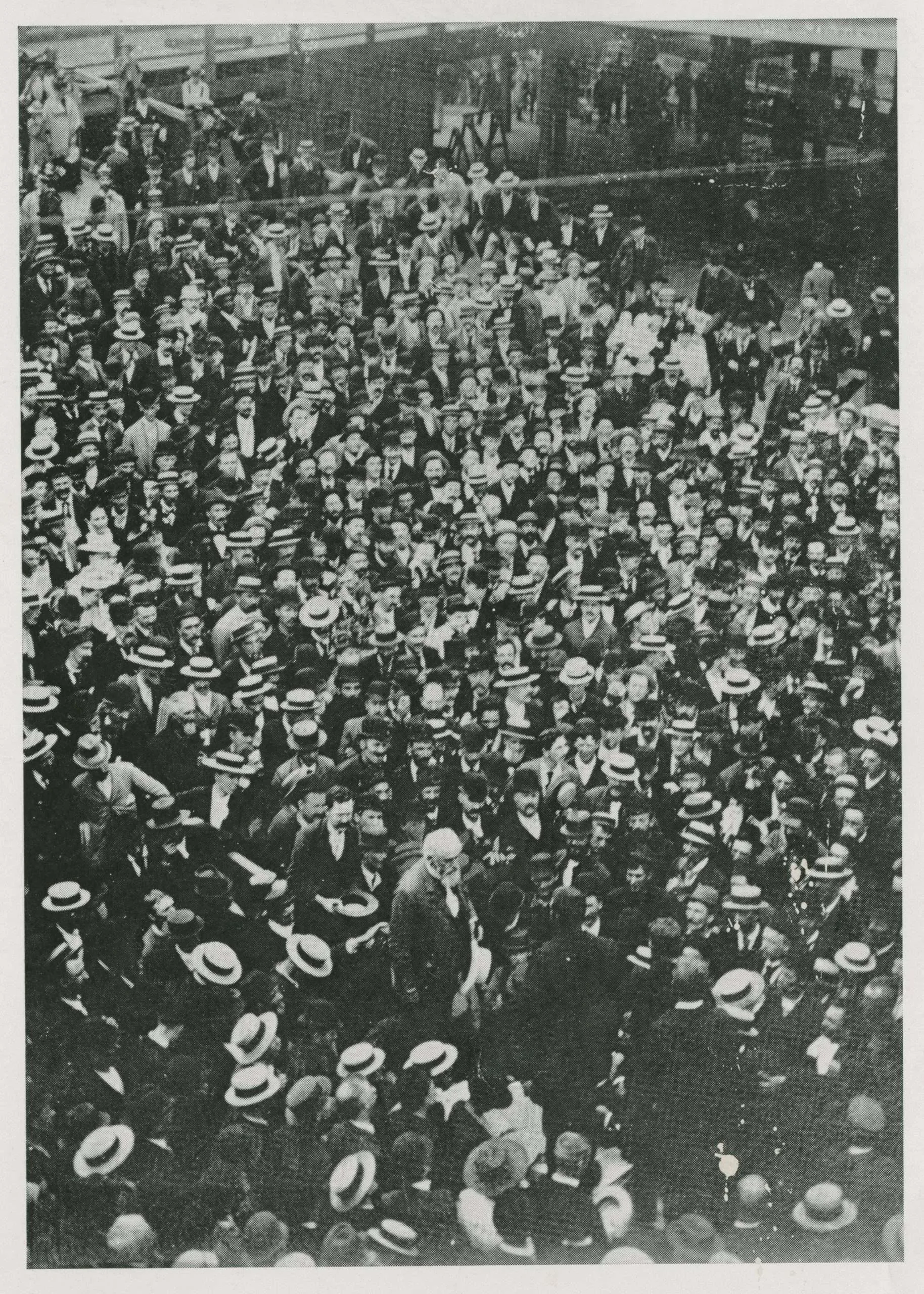
The assassination deeply shocked the city and the nation, leading to a somber atmosphere that replaced the final celebrations of the fair. Instead of the planned festivities, memorial services and tributes were held to honor Mayor Harrison’s memory. The tragic ending of the fair served as a reminder of the fragility of life and the impact of such a significant loss on the community. Despite the sorrowful conclusion, the World’s Columbian Exposition left an indelible mark on history and continued to inspire future generations with its achievements and innovations.
Woman’s Building Lemaire poster World Columbian Exposition
Woman’s Building Lemaire poster World Columbian Exposition
Viking replica of the Gokstad Viking ship, at the Chicago World Fair 1893
Viking replica of the Gokstad Viking ship, at the Chicago World Fair 1893
The Great Wharf, Moving Sidewalk, World’s Columbian Exposition
The Great Wharf, Moving Sidewalk, World’s Columbian Exposition
The Gilded Entrance to the Transportation Building, World’s Columbian Exposition
The Gilded Entrance to the Transportation Building, World’s Columbian Exposition
The Fisheries Building, World’s Columbian Exposition, Chicago, Illinois, 1893
The Fisheries Building, World’s Columbian Exposition, Chicago, Illinois, 1893
Mammoth and Giant Octopus at the 1893 Chicago World’s Columbian Exposition Fair
Mammoth and Giant Octopus at the 1893 Chicago World’s Columbian Exposition Fair
Idaho State Building at World’s Columbian Exposition 1893 Kirtland Cutter
Idaho State Building at World’s Columbian Exposition 1893 Kirtland Cutter
“Canal of Venice” during Chicago World’s Fair 1893
“Canal of Venice” during Chicago World’s Fair 1893
The great white city, World’s Columbian Exposition, by Kilburn, B. W. (Benjamin West), 1827-1909
The great white city, World’s Columbian Exposition, by Kilburn, B. W. (Benjamin West), 1827-1909
The Administration Building and Grand Court during the October 9, 1893, commemoration of the 22nd anniversary of the Chicago Fire.
The Administration Building and Grand Court during the October 9, 1893, commemoration of the 22nd anniversary of the Chicago Fire.
Brooklyn Museum – Chicago World’s Fair – Thomas Moran – overall
Brooklyn Museum – Chicago World’s Fair – Thomas Moran – overall
Agricultural Building at the Worlds Columbian Exposition, Chicago, Illinois, circa 1893
Agricultural Building at the Worlds Columbian Exposition, Chicago, Illinois, circa 1893
Agricultural Building at Night, Chicago World’s Fair 1893
Agricultural Building at Night, Chicago World’s Fair 1893
Conclusion
The World’s Columbian Exposition of 1893 stands as a testament to human creativity, innovation, and cultural diversity. From its meticulously planned architecture and lush landscapes to its groundbreaking technological advancements, the fair captivated the imagination of millions and left an enduring impact on urban design, scientific progress, and social consciousness. The fair’s visionary planners, led by Daniel H. Burnham, transformed Chicago’s landscape into a mesmerizing world of Classical facades and illuminated wonders. The Ferris wheel and the mesmerizing display of electricity brought a sense of awe and excitement to visitors, foreshadowing the technological marvels of the 20th century.
Beyond the innovative displays, the fair also served as a platform for nations to showcase their achievements and foster cultural exchange. The presence of numerous national pavilions allowed visitors to experience diverse cultures and traditions from around the world.
The World’s Columbian Exposition left a profound legacy, shaping urban planning through the City Beautiful movement. The integration of architecture and nature, exemplified by the harmonious landscapes and grand buildings, inspired cities to prioritize aesthetic beauty and create inviting public spaces. The fair’s financial success set a precedent for subsequent expositions, emphasizing the economic potential of hosting large-scale international events.
Surviving structures, such as the Palace of Fine Arts and the World’s Congress Auxiliary Building, stand as tangible reminders of the fair’s grandeur and architectural achievements. These enduring landmarks serve as cultural and educational institutions, keeping the spirit of the fair alive for future generations.
The World’s Columbian Exposition not only captivated visitors with its grandeur and innovation but also instilled a sense of hope and possibility for the future. The advent of electricity, showcased at the fair, heralded a new era of technological advancement and unlimited potential. Americans marveled at the possibilities it presented, envisioning a future where electricity would power homes, businesses, and entire cities, transforming everyday life. The fair demonstrated the remarkable progress made during the Gilded Age, inspiring Americans to embrace a spirit of innovation and pursue their own dreams and aspirations. While the era was not without its challenges, the World’s Columbian Exposition provided a beacon of hope, reminding Americans of the immense possibilities that lay ahead. It served as a catalyst for progress, encouraging individuals and communities to strive for a brighter future, where technological marvels and human ingenuity could overcome obstacles and shape a society built on the principles of equality, opportunity, and freedom. The legacy of the fair continues to inspire generations, reminding us of the power of collective imagination and the potential for a better tomorrow.

